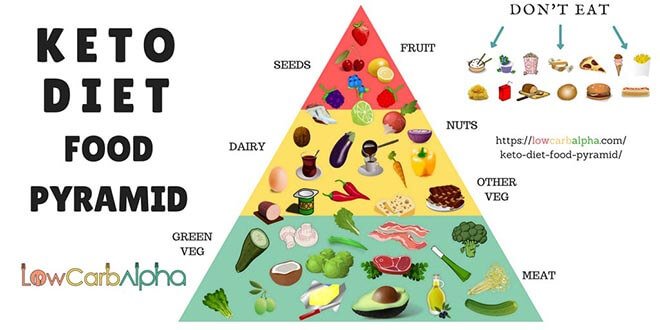
Food sources in the human diet can include beef, fish, poultry, pork, dairy, nuts, seeds, legumes, vegetables, fruits, and oils. As such, there is a nearly inexhaustible combination of macronutrients and micronutrients that individuals might choose when consuming food. Such variability is further complicated by lack of generalizability regarding the use of a single dietary approach when attempting to improve the health of the general public.1 Ultimately, diets must be tailored based on signs, symptoms, biomarkers, and goals of the individual to ascertain optimal health outcomes. Essentially, such an approach produces special diets for special needs. As a means of appreciating said diets, the following will consider two dietary interventions (Mediterranean and low carbohydrate/ketogenic diets) in greater detail.

When developing diets to restore the health of individuals, it is essential to consider signs (objective measures) and symptoms (subjective reports from the individual) as critical first steps.2 Such information not only elucidates issues (i.e., nutrient deficiencies, markers of disease); signs, symptoms, and biomarkers also provide a baseline to measure the effectiveness, or ineffectiveness, of a nutritional intervention. Clinical nutrition, as a discipline, aims to correct dietary insufficiencies (i.e., food and supplements) as well as optimizing nutrients and diet for particularly unique biochemical needs.3

Signs of disease and/or nutrient deficiencies can be monitored by blood tests and organic acid (OA) testing.2(324) Blood testing is generally a familiar and understood method of tracking markers of nutrient insufficiencies (i.e., low iron) and disease (i.e., insulin resistance). However, in this author’s opinion, OA testing is less understood amongst the public; OAs are functional markers of micronutrient inadequacies.2(324) Additionally, such tests also elucidate toxin exposures, neuroendocrine activity, intestinal bacterial/fungal overgrowth, metabolic function, and corroboration/verification of signs from other different tests (i.e., blood tests).2(324) When fused with blood tests and patient symptoms, a clearer picture of health, or lack thereof, emerges.

Ultimately, the aforementioned approaches help mitigate and/or manage disease processes by determining biomarker baselines. Such bio-individuality amongst individuals, and the goal of optimizing health, has led to the development and implementation of special diets addressing such issues. One diet of particular interest is that of Mediterranean origin, colloquially referred to as the Mediterranean diet (MD). Such a method of eating revolves around a generous use of fats with particular emphasis on olive oil, high intakes of vegetables/fruits/whole grains, with moderate intakes of fish, poultry, and red wine.4 Furthermore, such a diet also has been shown to decrease overall mortality by 9% from cardiovascular disease, in addition to being an effective means of controlling blood glucose levels, insulin resistance, diabetes, and is likely to help manage Alzheimer’s Disease, cancer, and depression. 3,4(2272)

Ketogenic diets (KDs) are characterized by a relatively low level of starchy carbohydrates compared to fat and protein content (i.e., a 4:1 ratio of fat to carbohydrate, respectively).5 Furthermore, KDs can include a large variety of non-starchy leafy green vegetables, cruciferous vegetables, healthy fats such as olive oil/avocado oil/coconut oil/flax oil, and protein sources such as beef, poultry, pork, fish, and dairy. The main goal is to keep starchy carbohydrates below 50 grams a day. Such a limit eventually encourages the body to favor fatty acid oxidation to produce ATP/energy and the production of ketone bodies.6,7 Such diets have been found to lower fasting blood glucose levels/hyperglycemia, increase weight loss, maintain muscle mass during weight loss, decreased plasma saturated fatty acids, decreased serum triglycerides, and increases in high-density lipoproteins.7(2,6,8,9)
In conclusion, the human diet has a nearly inexhaustible combination beef, fish, poultry, pork, dairy, nuts, seeds, legumes, vegetables, fruits, and oils. Such variability is further complicated by lack of generalizability regarding the use of a single dietary approach when attempting to improve the health of the general public. However, these challenges can be met and overcome by a close examination of an individual’s goals in addition to signs and symptoms of illness/nutrient deficiencies. Although the previous sections are not an extensive treatment and review of all special diets, said sections do provide insights on the influence of food-as-medicine, when applied appropriately. By acknowledging bio-individuality and tracking biomarkers, dietary interventions can be implemented in a way that is effective, measurable, and sustainable.
References
1. German JB, Roberts MA, Watkins, SM. Personal metabolomics as a next generation nutritional assessment. J Nutr. 2003;133(12):4260-4266. doi:10.1093/jn/133.12.4260.
2. Lord RS, Bralley, JA. Laboratory Evaluations for Integrative and Functional Medicine. 2 nd ed. Duluth, GA: Genova Diagnostics; 2012.
3. Adimando A. Food and Behavior. [PowerPoint]. Bridgeport, CT: UB Nutrition Institute; 2018.
4. Granado-Casas M, Alcubierre N, Martin M, et al. Improved adherence to Mediterranean diet in adults with type 1 diabetes mellitus. Eur J Nutr. 2019;58(6):2271-2279. doi: https://doi.org/10.1007/s00394-018-1777-z.
5. Noorlag L, De Vos FY, Kok A, et al. Treatment of malignant gliomas with ketogenic or caloric restricted diets: A systematic review of preclinical and early clinical studies. Clin Nutr. 2019;38(5):1986-1994. doi:http://dx.doi.org.libproxy.bridgeport.edu/10.1016/j.clnu.2018.10.024.
6. Paoli A, Rubini A, Volek JS, et al. Beyond weight loss: a review of the therapeutic uses of very low-carbohydrate (ketogenic) diets. Eur J Clin Nutr. 2013;67:789-796. Doi:10.1038/ejcn.2013.116.
7. Feinman RD, Pogozelski WK, Astrup A, et al. Dietary carbohydrate restriction as the first approach in diabetes management: Critical review and evidence base. Nutr. 2015;31(1):1-13. Doi:10.1016/j.nut.2014.06.011.
-Michael McIsaac
